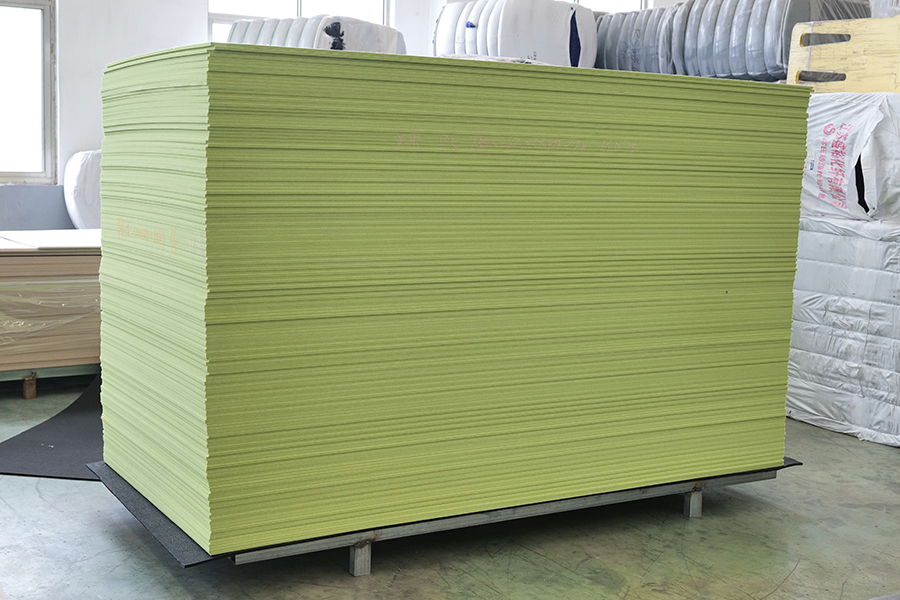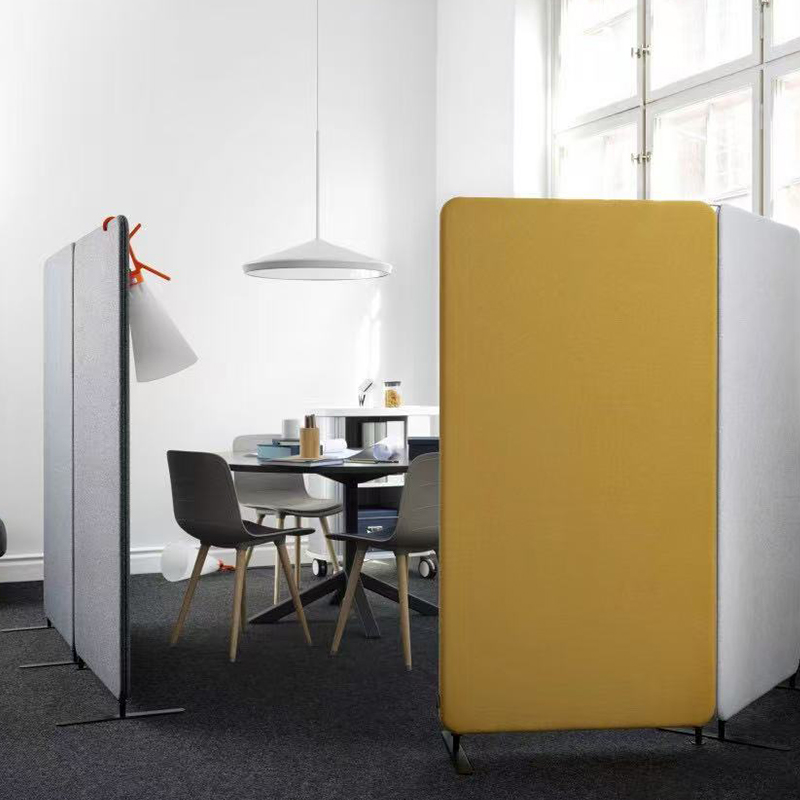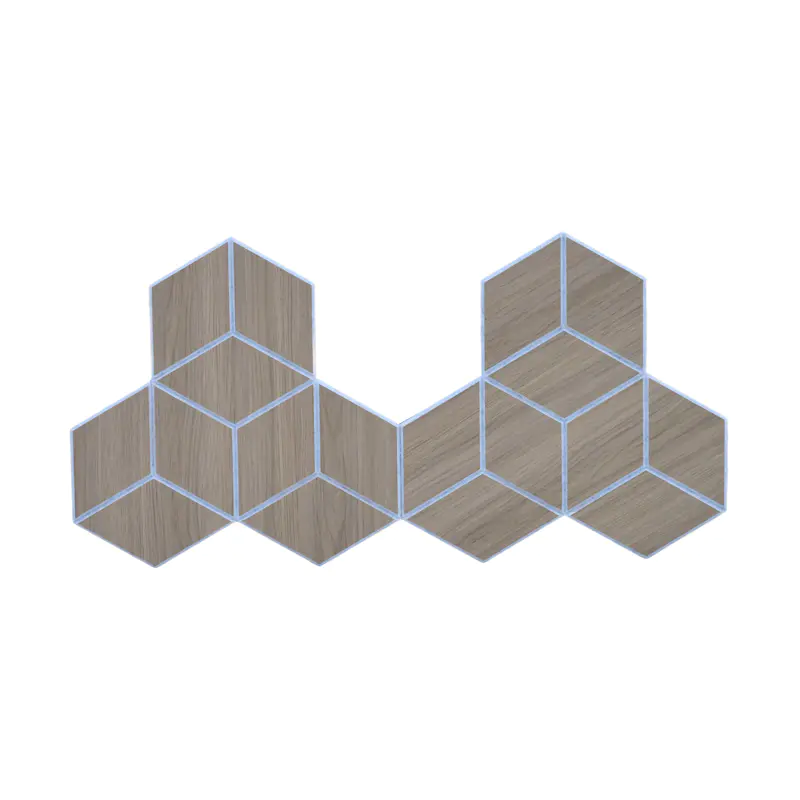+86-180 3665 1199
- 1 Introduction to Acoustic Sound Proof Panels
- 2 Types of Acoustic Sound Proof Panels
- 3 Factors to Consider When Choosing Panels
- 4 Top Acoustic Sound Proof Panel Products
- 5 Installation Guide
- 6 DIY vs. Professional Installation
- 7 Maintaining Your Acoustic Panels
- 8 Common Mistakes to Avoid
- 9 Conclusion
Introduction to Acoustic Sound Proof Panels
What are Acoustic Sound Proof Panels?
Definition and Purpose
Acoustic sound proof panels are specialized materials designed to control sound within a space by reducing noise levels, preventing sound leakage, and improving audio quality. They are commonly used in residential, commercial, and industrial environments to create quieter, more comfortable, and acoustically optimized spaces.
Difference Between Soundproofing and Sound Absorption
It’s important to understand the distinction between soundproofing and sound absorption. Soundproofing refers to preventing sound from entering or leaving a room, effectively blocking noise transmission. In contrast, sound absorption focuses on reducing echo and reverberation within a room, improving the clarity of sound without necessarily stopping it from passing through walls or ceilings. Acoustic panels can serve both purposes depending on the material and design.
Why Use Acoustic Sound Proof Panels?
Benefits of Soundproofing
- Noise Reduction: Minimize external noise and create a quieter environment.
- Enhanced Audio Quality: Reduce echo and reverberation for clearer sound in music studios, home theaters, or offices.
- Privacy: Prevent sensitive conversations from being overheard in offices or meeting rooms.
- Increased Comfort: Improve overall comfort in living or working spaces by reducing disruptive noises.
Common Applications
- Home Theaters: Improve sound quality and prevent sound leakage to other rooms.
- Offices: Reduce background noise and enhance employee focus and productivity.
- Recording Studios: Optimize room acoustics to achieve professional-quality sound recordings.
- Restaurants and Cafes: Reduce noise levels for a more pleasant dining experience.
- Conference Rooms: Maintain speech clarity and ensure privacy during meetings.
Types of Acoustic Sound Proof Panels
Foam Panels
Characteristics and Uses
Foam panels are lightweight, porous panels made from materials like polyurethane or melamine foam. They are designed to absorb sound waves, reducing echo and reverberation within a room. Foam panels are commonly used in recording studios, home theaters, and offices.
Pros and Cons
- Pros: Affordable, easy to install, effective at mid to high-frequency absorption, available in various shapes and colors.
- Cons: Limited low-frequency absorption, less durable over time, not ideal for blocking sound between rooms.
Fabric-Wrapped Panels
Characteristics and Uses
Fabric-wrapped panels consist of sound-absorbing cores covered with decorative fabric. They combine acoustic performance with aesthetic appeal, making them suitable for offices, conference rooms, restaurants, and home theaters.
Pros and Cons
- Pros: Attractive appearance, customizable colors and patterns, effective sound absorption across a wide frequency range.
- Cons: Higher cost than foam panels, may require professional installation, fabric can accumulate dust over time.
Wood Acoustic Panels
Characteristics and Uses
Wood acoustic panels are typically made of perforated or slatted wood with sound-absorbing material behind them. They provide both sound absorption and diffusion, enhancing room acoustics while adding a natural, elegant look. Commonly used in auditoriums, theaters, and high-end office spaces.
Pros and Cons
- Pros: Durable, visually appealing, effective at controlling mid to high frequencies, can improve room aesthetics.
- Cons: Expensive, heavier and harder to install, limited low-frequency absorption without additional materials.
Spesonic Acoustic Wall Panels Sound Absorbing, Decorative Sound Panels for Home Studio and Office
Mass Loaded Vinyl (MLV)
Characteristics and Uses
Mass loaded vinyl (MLV) is a dense, flexible material used primarily for blocking sound transmission through walls, ceilings, and floors. It’s often applied behind drywall or under flooring in construction projects requiring strong soundproofing.
Pros and Cons
- Pros: Excellent at blocking sound, thin and flexible, can be used in retrofitting projects.
- Cons: Expensive, does not provide sound absorption, requires professional installation for best results.
Acoustic Blankets
Characteristics and Uses
Acoustic blankets are heavy, portable panels made from dense fibers and layers of sound-absorbing materials. They are used for temporary soundproofing, such as covering walls, doors, or equipment in studios, workshops, or construction sites.
Pros and Cons
- Pros: Portable, versatile, effective for both sound absorption and temporary sound blocking.
- Cons: Bulky, less aesthetically pleasing, not a permanent solution.
Factors to Consider When Choosing Panels
Material
Density and Effectiveness
The material of acoustic panels directly affects their ability to absorb or block sound. Denser materials generally block more sound, while porous and fibrous materials absorb sound waves effectively. For example, foam and fabric-wrapped panels are excellent for absorption, while mass loaded vinyl is ideal for sound blocking.
Aesthetics
Acoustic panels are often visible elements in a room, so appearance matters. Fabric-wrapped and wood panels offer customizable designs, colors, and finishes to match interior decor, while foam panels are more functional and less decorative.
Size and Thickness
Impact on Sound Absorption
Thicker panels generally absorb lower-frequency sounds more effectively, while thinner panels work best for mid to high frequencies. Choosing the correct size and thickness ensures optimal sound absorption for the specific room acoustics.
Room Size Considerations
Room dimensions and layout influence how many panels are needed and where they should be placed. Larger rooms may require bigger panels or more coverage to achieve the desired acoustic performance, while small rooms may only need strategically placed panels.
NRC Rating
Understanding Noise Reduction Coefficient
The Noise Reduction Coefficient (NRC) measures a panel’s ability to absorb sound, expressed as a number between 0 and 1. A higher NRC indicates better sound absorption. For example, a panel with an NRC of 0.85 absorbs 85% of incident sound.
Importance of NRC Rating
Understanding the NRC helps you select the right panel for your acoustic needs. Rooms requiring high clarity, such as recording studios or conference rooms, benefit from panels with higher NRC values.
Fire Resistance
Safety Standards
Fire safety is crucial when choosing acoustic panels. Check that the panels meet local fire resistance standards (such as ASTM E84 or EN 13501) to ensure safety in case of fire.
Choosing Fire-Rated Panels
For public spaces, offices, or high-traffic areas, select panels with fire-rated certification. Materials like mineral wool or treated fabrics offer both acoustic performance and fire resistance.
Top Acoustic Sound Proof Panel Products
Product 1: Premium Foam Panel
- Description and Features: Lightweight polyurethane foam panel designed for high-frequency sound absorption. Available in wedge and pyramid shapes to enhance acoustic performance.
- Pros: Affordable, easy to install, effective for echo reduction in small to medium rooms.
- Cons: Limited low-frequency absorption, less durable over long-term use.
Product 2: Fabric-Wrapped Acoustic Panel
- Description and Features: Fiberglass or mineral wool core wrapped with decorative fabric. Suitable for offices, studios, and home theaters where aesthetics and acoustics matter.
- Pros: Wide range of colors and designs, effective across a broad frequency range, enhances room aesthetics.
- Cons: Higher cost than foam panels, requires careful handling to avoid fabric damage.
Product 3: Wooden Slat Acoustic Panel
- Description and Features: Perforated or slatted wood panel with sound-absorbing material behind. Ideal for auditoriums, high-end offices, or decorative acoustic walls.
- Pros: Durable, visually appealing, provides both absorption and diffusion.
- Cons: Heavier, more expensive, may require professional installation.
Product 4: Mass Loaded Vinyl Panel
- Description and Features: Flexible, dense vinyl panel for sound blocking. Can be installed behind drywall, under flooring, or as a wall covering to prevent noise transmission.
- Pros: Excellent for blocking sound, thin and flexible, ideal for retrofitting existing rooms.
- Cons: Expensive, does not absorb sound, professional installation recommended.
Product 5: Acoustic Blanket Panel
- Description and Features: Heavy, portable acoustic blanket with dense fiber layers. Suitable for temporary soundproofing in studios, workshops, or during construction.
- Pros: Portable and versatile, effective for both sound absorption and temporary sound blocking.
- Cons: Bulky, less decorative, not a permanent solution.
Installation Guide
Preparing the Surface
Cleaning and Measuring
Before installing acoustic panels, ensure the surface is clean, dry, and free from dust or debris. Measure the walls or ceiling to determine panel placement, ensuring proper coverage for maximum soundproofing.
Tools and Materials Needed
- Measuring tape and level
- Pencil or chalk for marking positions
- Adhesive, screws, or mounting clips (depending on panel type)
- Drill or screwdriver if using screws or clips
- Protective gloves and safety glasses
Panel Placement
Strategic Placement for Optimal Soundproofing
Position panels at points where sound reflection and transmission are most significant. Common areas include walls opposite speakers, corners, and ceilings in studios or home theaters. Consider both direct sound paths and reflective surfaces.
Common Installation Patterns
- Grid Pattern: Panels evenly spaced to cover the entire wall or ceiling.
- Checkerboard Pattern: Alternating panels and empty spaces to balance absorption and aesthetics.
- Corner Bass Traps: Panels placed in corners to absorb low-frequency sound waves.
Mounting Methods
Adhesive, Screws, Clips
Different panels require different mounting methods:
- Adhesive: Quick and easy for lightweight foam or fabric-wrapped panels.
- Screws: Secure and durable, suitable for heavier wood or composite panels.
- Clips: Allow removable or adjustable installation, often used in professional studios.
Step-by-Step Installation Instructions
- Mark the panel positions on the wall or ceiling using a measuring tape and level.
- If using adhesive, apply it to the back of the panel and press firmly against the surface.
- If using screws or clips, pre-drill holes and secure the panel using the chosen hardware.
- Check alignment and spacing for uniform coverage.
- Repeat the process for all panels, ensuring proper coverage for optimal soundproofing.
DIY vs. Professional Installation
Cost Comparison
When deciding between DIY installation and hiring a professional, cost is a major factor. DIY installation typically only requires purchasing panels, adhesive, and basic tools, making it more budget-friendly. Professional installation includes labor costs, which can significantly increase the overall expense, but ensures precise placement and long-term stability.
DIY Expenses vs. Professional Fees
- DIY: Cost of panels, adhesives, screws, and basic tools.
- Professional: Labor fees in addition to material costs, which may vary depending on room size and panel type.
Time and Effort
DIY Time Commitment
DIY installation can be time-consuming, especially for large rooms or complex layouts. Planning, measuring, mounting, and adjustments can take several hours to days depending on the number of panels and your experience.
Professional Efficiency
Hiring a professional significantly reduces the time and effort required. Experienced installers can complete the job quickly and accurately, ensuring optimal acoustic performance and reducing the risk of mistakes.
Expertise Required
Assessing Your Skills
DIY installation requires basic knowledge of tools, measurements, and panel handling. Misalignment or improper mounting can reduce soundproofing effectiveness.
When to Hire a Professional
- Large or complex rooms where precise panel placement is critical.
- High-end acoustic requirements such as recording studios or theaters.
- If you lack tools, experience, or time to complete the installation correctly.
Maintaining Your Acoustic Panels
Cleaning
Best Practices for Different Materials
Regular cleaning helps maintain both the appearance and acoustic performance of panels. Different materials require different approaches:
- Foam Panels: Use a soft brush or vacuum with a brush attachment to remove dust. Avoid water or harsh chemicals that may damage the foam.
- Fabric-Wrapped Panels: Gently vacuum the fabric surface or use a lint roller. For stubborn stains, lightly dab with a mild detergent solution, but avoid soaking the panel.
- Wood Panels: Wipe with a dry or slightly damp cloth. Avoid excessive moisture to prevent warping or damage to the finish.
- Mass Loaded Vinyl: Wipe with a damp cloth and mild soap if needed. Avoid abrasive cleaners.
- Acoustic Blankets: Vacuum regularly and store properly when not in use to prevent dust accumulation and deformation.
Avoiding Damage
- Do not use high-pressure water or steam cleaners.
- Avoid exposing panels to direct sunlight for long periods to prevent fading or material degradation.
- Handle panels gently during cleaning or relocation to avoid tears, dents, or scratches.
Inspection
Checking for Wear and Tear
Periodically inspect panels for any signs of damage or deterioration, including:
- Loose edges or peeling fabric
- Cracks or dents in wood panels
- Compression or deformation in foam panels
- Damage to mass loaded vinyl or blankets
Replacing Damaged Panels
Replace any panels that show significant damage or reduced effectiveness. Timely replacement ensures consistent acoustic performance and maintains the overall aesthetics of the space.
Common Mistakes to Avoid
Insufficient Coverage
Importance of Full Coverage
One of the most common mistakes is using too few panels, which results in uneven sound absorption and ineffective noise control. Full coverage, especially in critical reflection points, ensures optimal acoustic performance.
Calculating Panel Needs
- Measure room dimensions to determine the required number and size of panels.
- Consider both walls and ceiling, as sound reflections occur on all surfaces.
- Use acoustic modeling tools or consult guidelines to estimate proper coverage percentage for your room type.
Ignoring Other Sound Leaks
Doors, Windows, and Vents
Acoustic panels alone cannot block all noise. Sound can easily leak through doors, windows, vents, and gaps. Neglecting these areas reduces the overall effectiveness of soundproofing.
Comprehensive Soundproofing Solutions
- Seal gaps around doors and windows with weatherstripping or acoustic seals.
- Install acoustic door sweeps or window inserts if necessary.
- Consider duct or vent covers designed for soundproofing.
Using the Wrong Type of Panel
Matching Panels to Specific Needs
Choosing panels without considering their purpose can lead to poor results. For example, foam panels are great for absorption but cannot block noise, while mass loaded vinyl blocks sound but does not improve room acoustics.
Consulting with Experts
- Identify whether your priority is absorption, sound blocking, or both.
- Seek guidance from acoustic professionals or reliable resources to select panels suitable for your room size, layout, and goals.
- Consider combining different panel types for optimal performance.
Conclusion
Recap of Key Points
- Acoustic sound proof panels are essential for controlling noise, improving sound quality, and enhancing privacy in various spaces.
- Different types of panels—foam, fabric-wrapped, wood, mass loaded vinyl, and acoustic blankets—serve specific purposes and have unique advantages and limitations.
- When choosing panels, consider material, size, thickness, NRC rating, and fire resistance to ensure effective soundproofing and safety.
- Proper installation—whether DIY or professional—is crucial for achieving optimal acoustic performance.
- Regular maintenance and awareness of common mistakes, such as insufficient coverage or ignoring other sound leaks, help maintain long-term effectiveness.
Final Thoughts on Soundproofing Your Space
Investing in acoustic sound proof panels is a practical solution for creating a quieter, more comfortable, and acoustically optimized environment. By understanding your room’s specific needs, selecting the right type of panels, and installing them correctly, you can significantly enhance both the functionality and aesthetics of your space. Whether for home theaters, offices, studios, or public spaces, proper acoustic treatment ensures a better listening experience, improved focus, and greater privacy.




